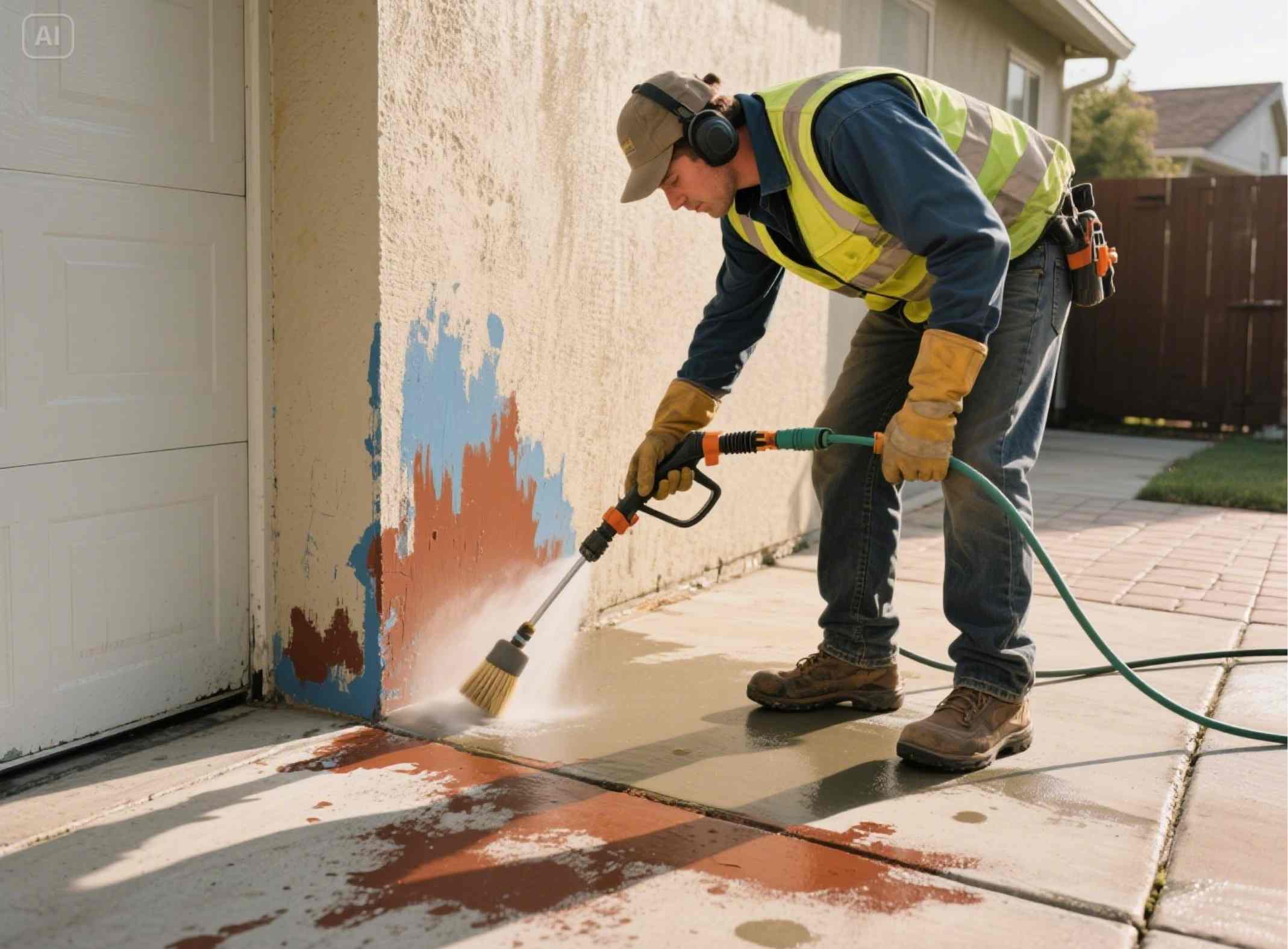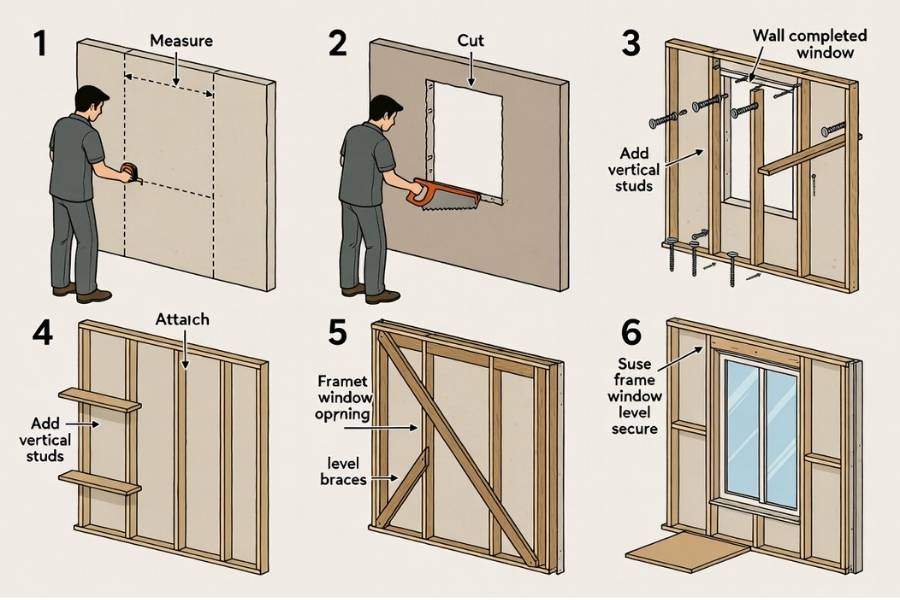Concrete surfaces are durable and rugged, but can also be stubborn when paint finds its way onto them. Whether from a DIY project gone awry or years-old paint splatters, getting paint off concrete can feel daunting. The good news? Effective ways to restore that clean, smooth finish to your concrete exist.
This guide will walk you through proven methods to remove paint from concrete, ranging from simple household solutions to heavy-duty techniques. No matter the size of your project or the type of paint you’re dealing with, you’ll find a solution here.
Why Removing Paint from Concrete Can Be Challenging
Unlike smoother surfaces, concrete is porous. This means the liquid seeps into tiny holes when paint drips or spills on it, making it harder to remove. While this does make the process more challenging, it’s not impossible with the right approach.
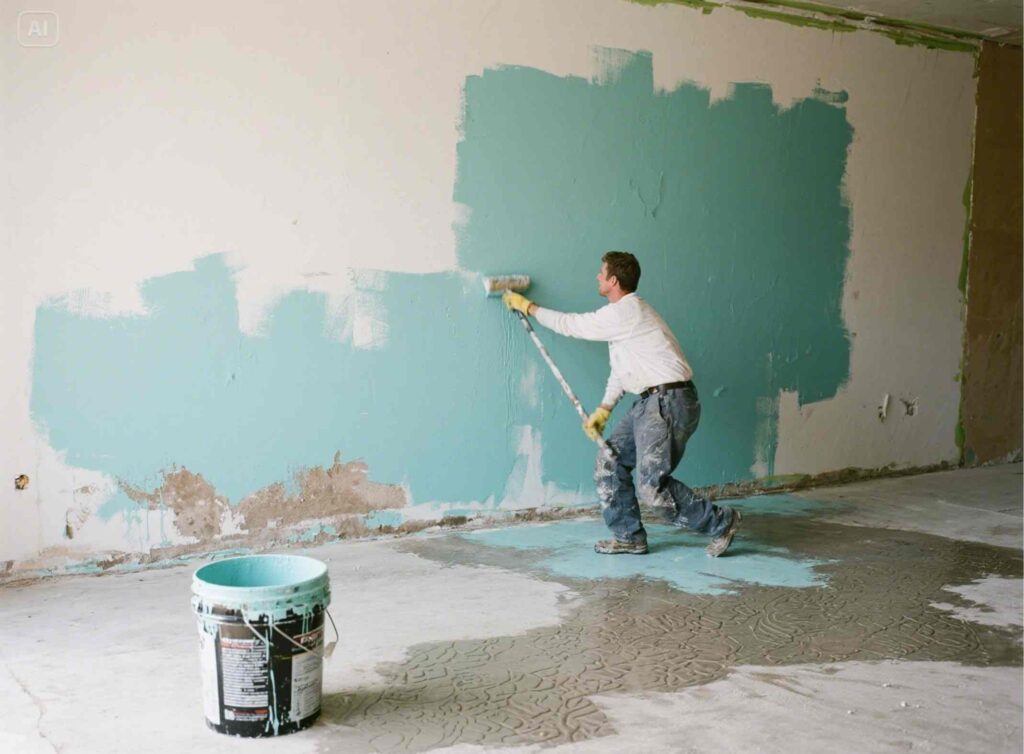
The complexity also depends on:
- Age of the paint – Fresh paint is easier to remove than old, dried-up coats.
- Type of paint – Oil-based paint adheres differently than water-based or latex paint.
- Concrete finish – Painted smooth concrete is easier to clean than textured or stamped finishes.
Now that you understand why concrete can be tricky, let’s explore solutions that work.
Tools and Materials You’ll Need
Before you begin, it’s a good idea to gather the necessary tools. Depending on the method you choose, some or all of the following items may come in handy:
- Protective gloves and goggles
- Paint scraper or putty knife
- Wire brush
- Power washer
- Tri-sodium phosphate (TSP) cleaner
- Paint stripper or remover
- Heat gun
- Absorbent material like kitty litter
- Plastic sheeting or tarp
- Bucket and cleaning sponges
- Garden hose
Having these tools ready will make the process smoother and safer.
Step-by-Step Guide to Removing Paint from Concrete
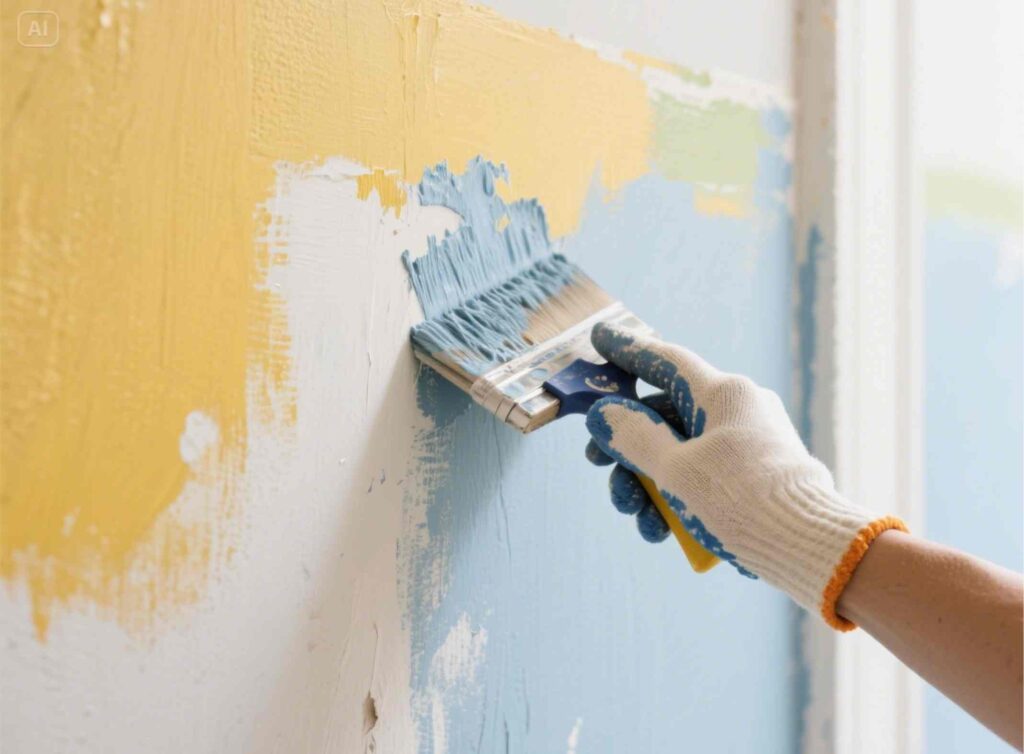
The method you use to remove paint will depend on several factors, including the size of the area you’re working with and the type of paint. Below, we’ll break down the most effective techniques.
Method 1: Soap and Water for Fresh Paint
Simple soap and water are surprisingly effective if the paint is still wet or hasn’t dried completely.
- Act quickly – Use a paper towel or rag to blot (not wipe) any excess paint. Avoid spreading it further.
- Apply soap and water – Mix a few drops of dish soap and warm water in a bucket, then scrub the area with a stiff-bristled brush.
- Rinse thoroughly – Remove soapy residue with a garden hose or clean water. Repeat if necessary for small spots of leftover paint.
This method works best on latex or water-based paints without time to dry.
Method 2: Use a Paint Scraper for Small Areas
A paint scraper or putty knife might be all you need for a small spot or light splatter.
- Start scraping – Gently scrape away the loosened paint. Take care not to gouge or damage the concrete.
- Wire brush – For stubborn spots, use a wire brush to scrub after scraping.
This simple method may not work well for large areas or deeply absorbed paint.
Method 3: Paint Remover or Stripper for Tough Jobs
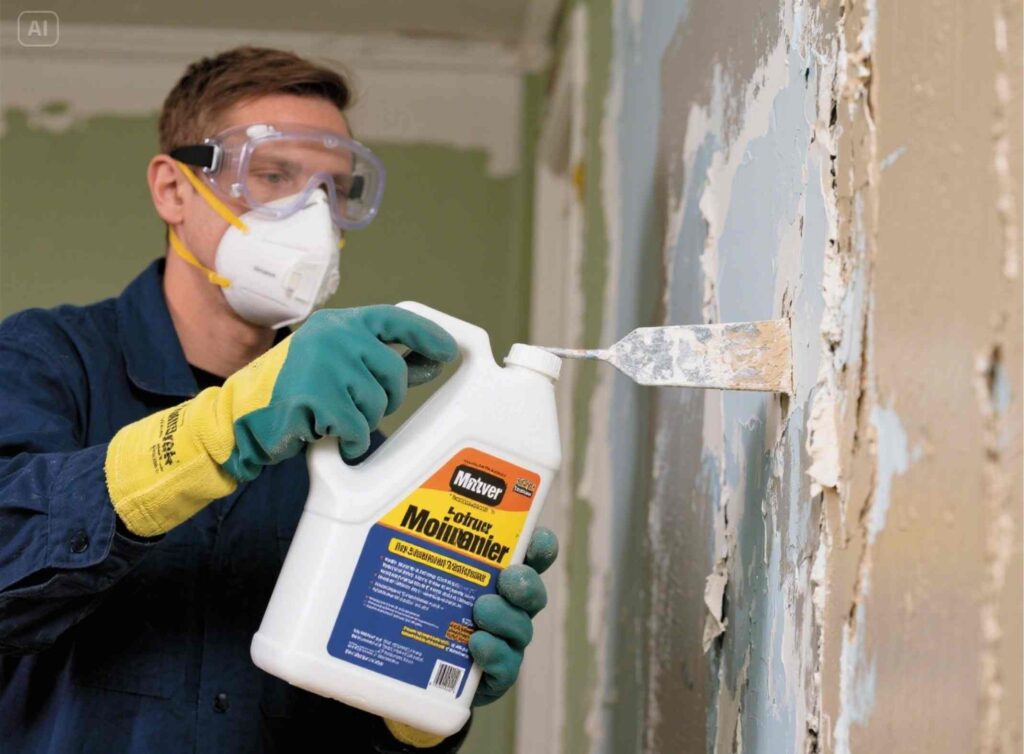
A paint stripper can be a lifesaver for dried-on paint or large areas. Always wear gloves and goggles when handling chemicals.
- Choose the right product – Select a paint remover suitable for your type of paint, prioritizing eco-friendly options if possible.
- Apply the stripper – Spread an even layer of paint remover over the paint using a brush or roller.
- Cover and wait – Lay plastic sheeting or a tarp over the stripper to prevent it from drying too quickly. Wait the recommended time on the product’s label.
- Scrape it off – Use a paint scraper to remove the loosened paint.
- Rinse thoroughly – Clean the surface with water to remove residue. Depending on the product, you may need to neutralize it with a TSP cleaner.
Method 4: Power Washing for Outdoor Paint Removal
A power washer can quickly remove paint if you’re dealing with large outdoor concrete areas like patios or driveways.
- Start by loosening paint – Use one of the methods above to loosen the surface paint.
- Use a wide spray setting. First, set the power washer to a lower pressure and gradually increase it as needed. Hold the nozzle at least 12 inches away from the surface to avoid damage.
- Rinse thoroughly – Move back and forth in an even pattern to ensure all paint is washed away.
Method 5: Heat Gun for Stubborn Paint Layers
For long-standing, thick layers of paint, a heat gun can help you loosen them.
- Heat the paint – Turn on the heat gun and hold it a few inches from the painted surface. Slowly move it back and forth.
- Scrape while warm – Once the paint softens, use a scraper to remove it.
- Rinse or clean up – Wash the concrete thoroughly to remove any remaining residue.
Bonus Tip for Oil-Based Paint
For oil-based paint, a solvent like mineral spirits or acetone can dissolve the paint before scraping it away. Apply the solvent with a cloth and scrub gently until the paint lifts.
Preventing Future Paint Spills
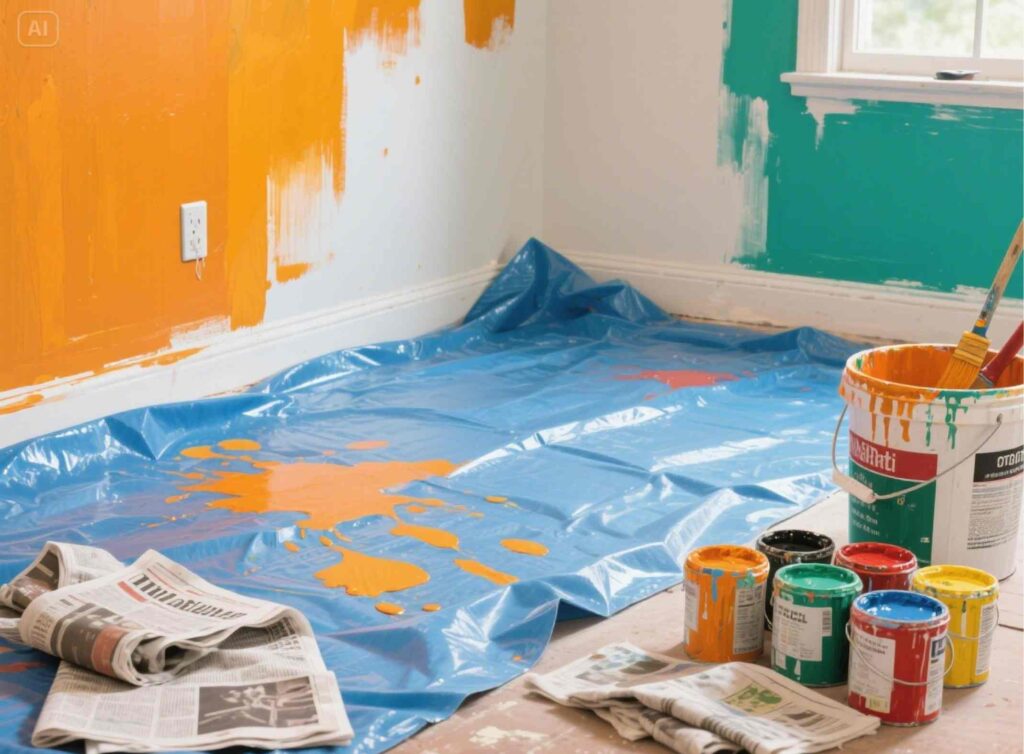
Prevention is the key to avoiding future messes now that your concrete is free of paint.
- Use drop cloths or plastic tarps to cover surrounding areas when painting.
- Place absorbent materials like newspaper or rags around the work zone.
- Store paints securely and handle them with care during projects.
By taking these precautions, you’ll save yourself the hassle of cleaning up paint spills.
Takeaway Tips for Successful Paint Removal
- Always test in a small, inconspicuous area first.
- Protect yourself by wearing gloves, goggles, and a face mask if working with chemicals.
- Patience is key. Removing paint from concrete can take time, especially for older spills.
You can restore your concrete to a clean, paint-free state with the right tools and techniques.re any surface!







